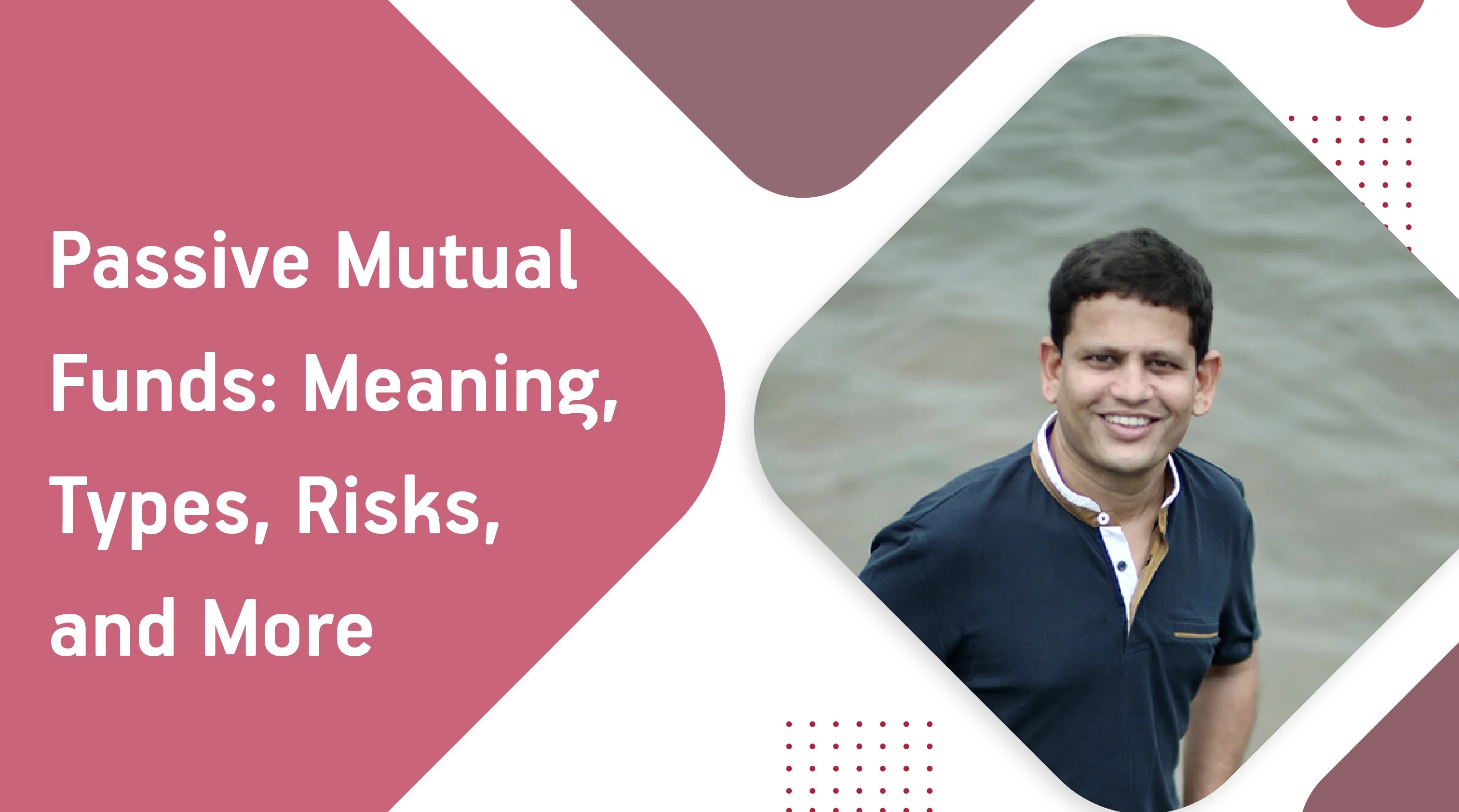Summary
A mutual fund can either be an active or passive scheme based on how its portfolio is managed. Keep reading this post to learn more about passive funds and how they differ from active ones.
Content
In India, mutual funds are classified in many ways based on their organizational structure, investment objective, etc. One such classification depends on portfolio management strategy. Under this category, a mutual fund scheme could either be actively or passively managed.
But what are passive mutual funds? Are there different types of passive mutual funds in India? How are these schemes different from active funds? Let’s take a look-
What are Passive Mutual Funds?
If we take a large-cap equity mutual fund, for example, the fund manager will constantly seek opportunities to generate returns for the investors. The process involves regular research and buying/selling of stocks. This is known as an active investment approach. All the mutual funds that follow this portfolio management strategy are known as active funds.
But passive schemes are different. Passive funds like index funds follow an index like Sensex or Nifty 50. So, the portfolio of these schemes mimics the composition of their underlying benchmarks. Adjustments are only made to the portfolio when the index composition changes. So, unlike active funds, fund managers don’t actively make decisions regarding buying/selling of stocks but focus on following their benchmarks.
How are Passive Mutual Funds Different from Active Mutual Funds?
Here are some of the most significant differences-
Parameter |
Active Mutual Fund |
Passive Mutual Fund |
Investment Objective |
Aim to outperform the market or its benchmark index |
Aim to deliver returns similar to the underlying benchmark |
Investment Approach |
Asset class selection, sectoral allocation, stock selection, entry/exit timing, profit booking |
Follow the underlying benchmark and only make adjustments per changes in the benchmark |
Expense Ratio |
Higher |
Lower |
Tax |
Frequent profit booking can possibly result in higher net taxes |
They may have lower net taxes |
Investment Risks |
They carry various risks arising from Inappropriate stock/sector selection, market timing, market volatility |
While they also carry risks, it is typically limited to only market volatility |
What are the Various Types of Passive Mutual Funds?
Some of the most popular passive mutual funds are-
Index Funds
These schemes use an index like Sensex or Nifty 50 to build a similar passive investment portfolio. Index funds aim to follow the index fund as precisely as possible. As a result, the returns from index funds are more or less similar to those delivered by the underlying index.
Read more – What is an Index Funds?
ETFs
Exchange Traded Funds (ETFs) are marketable securities that track indexes, bonds, commodities, or asset baskets like index funds. ETFs are listed on stock exchanges and traded like stocks. As a result, the price of an ETF also fluctuates throughout the day based on demand and supply.
What is the Fee Structure of a Passive Mutual Fund?
The research costs, fund manager fees, trading costs, etc., make the management of active schemes costlier for AMCs (Asset Management Companies). As a result, these schemes have a higher TER (Total Expense Ratio).
But as passive schemes don’t require extensive research or regular buying/selling of securities, their TER is lower than active schemes.
Here are SEBI’s guidelines on maximum TER for active and passive schemes-
Type of Scheme |
Maximum TER |
Equity (Active) |
2.25% |
Debt (Active) |
2% |
Index, ETFs, etc. (Passive) |
1% |
Disclaimer: This table shows the maximum TER limit. Read the scheme document carefully to know a fund’s exact TER before investing.
What are the Risks of Investing in Passive Mutual Funds?
Some of the risks of investing in passively managed funds are as follows-
Tracking Error
While these schemes try to mimic the underlying benchmarks and deliver similar returns, they are prone to tracking errors. It can be defined as the difference between the returns generated by a passive scheme against its benchmark. Therefore, before investing, investors should check the tracking error of the scheme to ensure it is low.
Market Volatility
Equity-based passive funds are market-linked securities. As a result, they’re not immune to market volatility. But compared to most actively managed schemes, they’re potentially less risky. However, investors should thoroughly understand these schemes, including the potential risks, before investing.
Also Visit - Hybrid Mutual Funds
Building a Diversified Portfolio with Passive Mutual Funds
If your objective is to diversify your investment for long-term wealth creation, adding some of the best passive mutual funds can be a good addition to your portfolio. The schemes are also ideal for new equity investors who are unaware of the dynamics and risks of the stock market.
But as passive schemes like index funds and ETFs are market-linked, analyze your risk profile before investing. The assistance of an investment advisor could help make the investment decision easier.
Mutual Fund investments are subject to market risks, read all scheme related documents carefully.





 1800-270-7000
1800-270-7000




